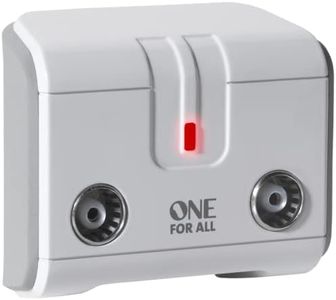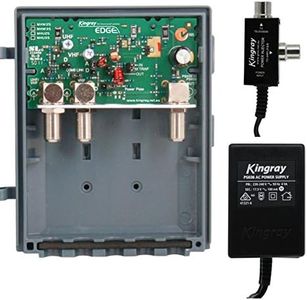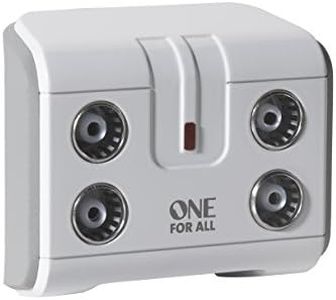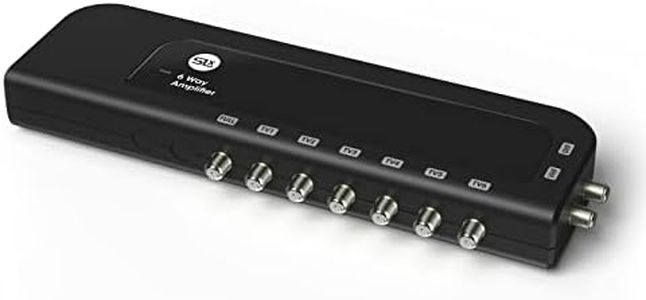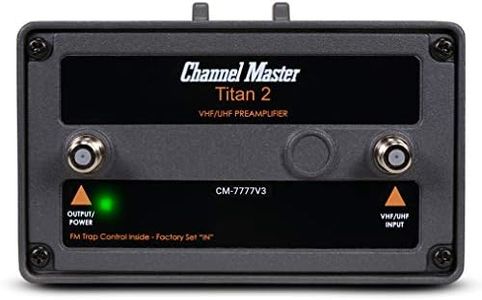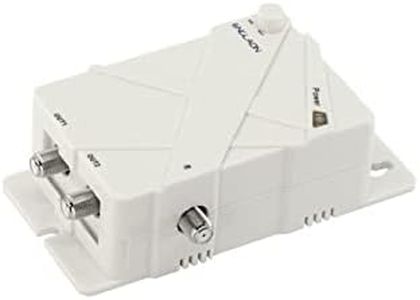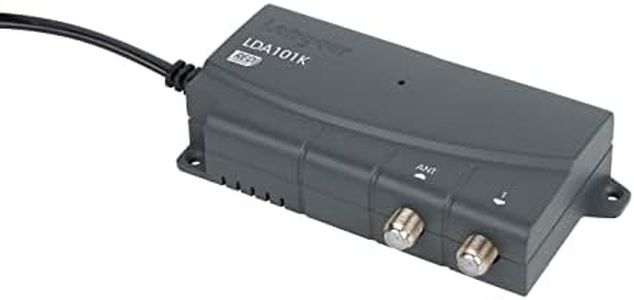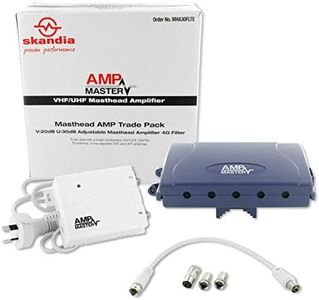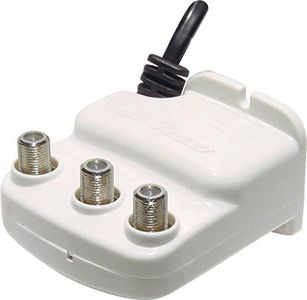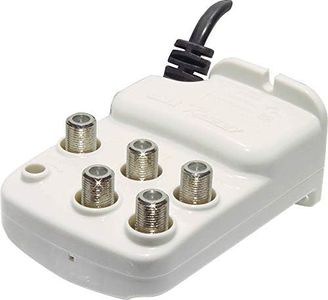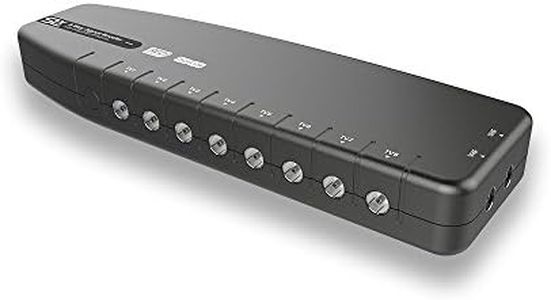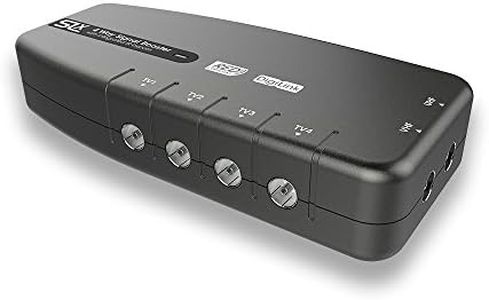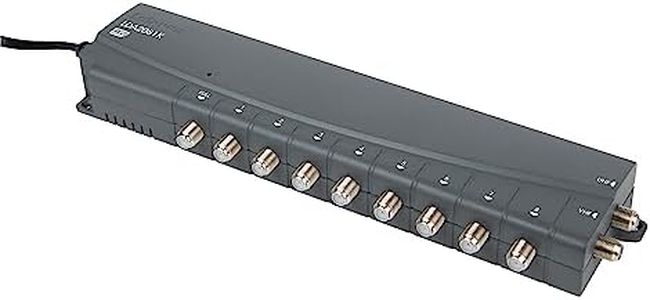We Use CookiesWe use cookies to enhance the security, performance,
functionality and for analytical and promotional activities. By continuing to browse this site you
are agreeing to our privacy policy
10 Best TV Signal Booster
From leading brands and best sellers available on the web.By clicking on a link to a third party's website, log data is shared with that third party.
Buying Guide for the Best TV Signal Booster
Choosing a TV signal booster, also called a TV amplifier, can improve the quality of your television reception if you're experiencing weak or patchy signals. The main purpose of this device is to amplify incoming TV signals, making channels clearer and helping prevent issues like pixelation or signal drops. To find the best fit, think about the specific issues you're facing—like distance from broadcast towers, obstacles in your area, or the number of TVs you want to connect. Understanding the key features will help you get a booster that matches your setup, avoids signal overload, and brings you the clearest possible TV picture.Gain (dB)Gain, measured in decibels (dB), determines how much the booster strengthens the incoming signal. A higher gain means more amplification. Typically, signal boosters can range from around 10 dB to 36 dB. If you have a very weak signal due to living far from the broadcast source, a higher gain booster may help. However, if your signal is only slightly weak, an overly powerful booster can actually worsen things by causing distorted signals. For short cable runs and small apartments, lower gain is often sufficient, while for long cable runs or larger homes feeding multiple TVs, medium to higher gain might be better.
Number of OutputsThe number of outputs tells you how many TV devices you can connect to the booster at the same time. Single-output boosters are ideal if you’re only boosting the signal for one TV, while multi-output models can split the signal to several TVs in your home. Choose the number of outputs based on how many TVs or signal paths you need to support, keeping in mind that each split can weaken the signal a bit, so adequate gain is needed for multiple-output use.
Noise FigureThe noise figure, often just called 'noise,' describes how much unwanted electrical interference the booster adds to the TV signal, usually measured in decibels. The lower the noise figure, the cleaner your boosted signal will be. A low noise figure (under 3 dB) is ideal because it means the booster won't degrade the signal quality. This is especially important when dealing with already weak signals. So, look for a booster with a low noise figure to ensure the best picture and sound.
Frequency RangeThe frequency range tells you what types of signals the booster can handle. For TV boosters, you mainly want support for the VHF and UHF bands because these cover most digital and analog TV channels. Some boosters are made just for UHF or VHF, while others cover both. The best choice depends on what channels you receive in your area. Knowing whether your main stations use UHF, VHF, or both helps you select a booster that fits your needs.
Power Type (Passive vs. Powered)Boosters can be passive (requiring no power) or powered (needing an electrical outlet). Powered boosters are more effective for amplifying weak signals, while passive splitters/boosters simply distribute the signal and are only suited for strong signals. If you have long cable runs, multiple TVs, or a noticeably weak signal, a powered booster is typically best. For setups where the signal is generally strong but needs splitting, a passive model may suffice.
Indoor vs. Outdoor PlacementSome boosters are meant for indoor installation—usually near your TV or the entry point of the signal—while others are weatherproof and designed for outdoor use, close to the antenna itself. Outdoor boosters generally provide better performance because they amplify the signal before it travels through long cables, minimizing loss. If you can install near the antenna outside and need the best possible signal, an outdoor booster is ideal. However, if running cables outside is difficult, an indoor booster can still offer significant improvements.
